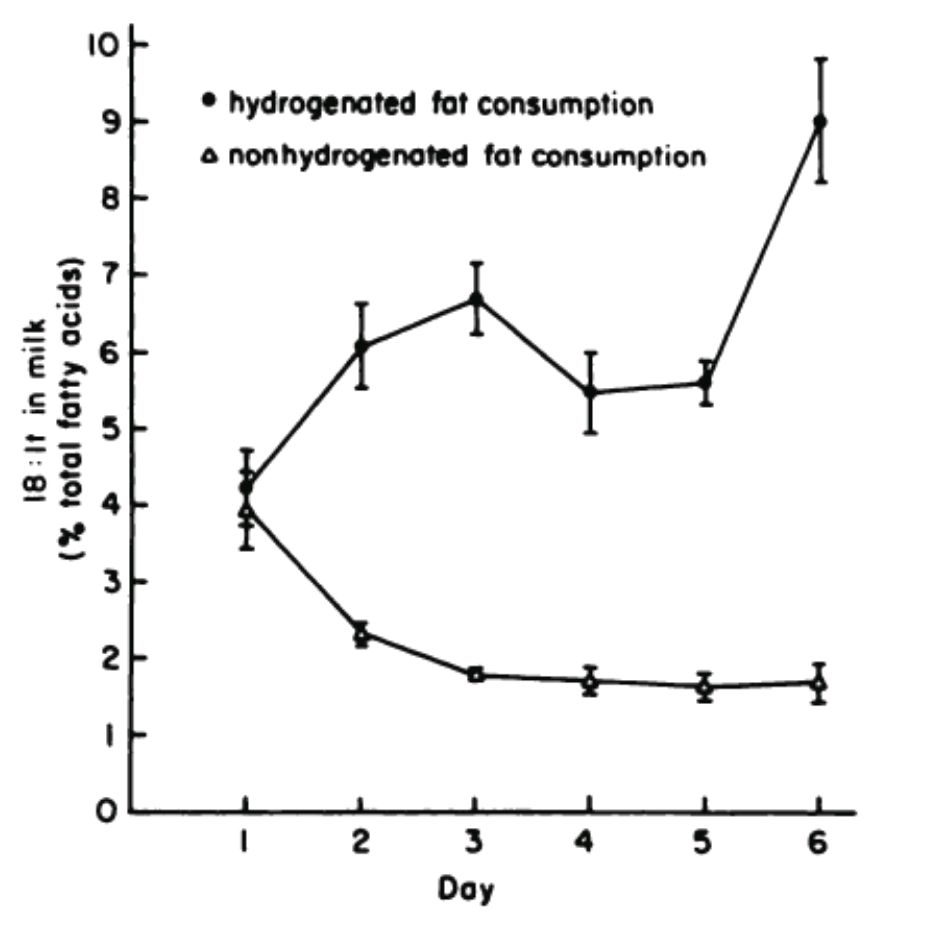Hydrogenation is the process by which hydrogen is reacted with unsaturated fats to convert them to saturated fats. This is advantageous to the food industry as it creates solid oils that can be used in food preparation which are cheaper than saturated fats from animal sources. If this process is complete, the saturated fatty acids produced are chemically identical to saturated fats sources from animals. However, partially hydrogenation results in the formation of trans fatty acids. Trans fatty acids are detrimental to health because they can interfere with the metabolism of essential fatty acids at several points along their metabolic pathway and in this way trans fatty acids interfere with the formation of eicosanoids. Eicosanoids are important because they regulate cellular function and inflammation and trans fatty acids alter their synthesis to produce a proinflammatory state. Because many eating a Western diet are already borderline deficient in essential fatty acids of the omega-3 variety, increased intakes of trans fats may exacerbate this problem.
Intakes of trans fatty acids may be particularly damaging during pregnancy and breast feeding because they cause essential fatty acid deficiencies in the mother. However, more worrying, they can also alter the availability of essential fatty acids to the growing foetus or infant. The rapid growth of infants causes an increased requirement for omega-3 fatty acids, particularly docosahexaenoic acid (DHA, C22:6 (n-3)) that is essential for development of the central nervous system. Trans fats may decrease the availability of these fatty acids and this may in turn affect the structure and function of the brain in a negative way. Researchers have assessed the effects of hydrogenated fat in the maternal diet on the lipid composition of human milk1. This was achieved by feeding the mothers diets high hydrogenated fat diets containing 12 % of the trans fat octadecenoic acid (trans18:1) or a low hydrogenated fats diet containing 1 % octadecenoic acid. The trans fatty acid content of the milk was then monitored.
The results showed that the octadecenoic acid content of the milk from the mothers was significantly higher during consumption of the high hydrogenated fat diet compared to the low hydrogenated fat diet. The amount of octadecenoic acid in the milk was positively associated with the concentration of hydrogenated fat in the previous days diet (figure 1). These results indicate that the trans fat content of the maternal diet is able to influence the diet of the infant. Other studies have shown that omega 3 fatty acids are required for correct brain development in the infant, and by supplying high concentrations of trans fats, human milk may have long-term detrimental effects on the mental and physical health of the offspring. This is worrying because in the United Kingdom, at present trans fats are not required to be listed on food labels. However, the amount of trans fats can be estimated by subtracting the sum of the saturated and unsaturated fatty acids from the total fat content. Of course the best way to avoid trans fats is to eat a high quality diet.

Figure 1. Changes in the octadecenoic acid (trans18:1) content of breast milk following a high and low hydrogenated fat diet.
RdB
